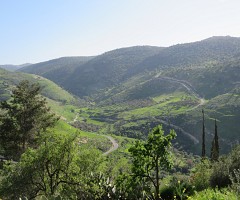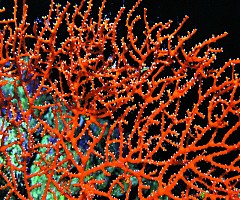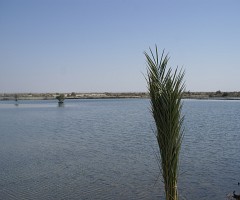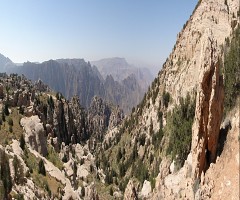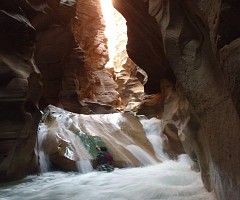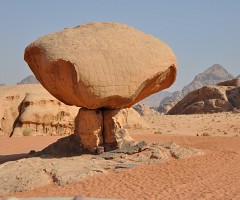It’s funny how preconceived notions can color your perspective on a place. For all the travel dreams that movies like Lawrence of Arabia and Indiana Jones & the Last Crusade inspired, they also painted the Middle Eastern nation of Jordan as a land of ancient archaeological sites and vast, expansive deserts.
It’s not that those images are inaccurate. But, upon visiting the country, you find that they only tell a small fraction of the story. During your visit to Jordan, you should explore many of its lesser-known natural treasures, all of which are protected by the Royal Society for the Conservation of Nature (RSCN).
In exploring these nature reserves– from chilly mountain hideaways and pine forests to lush wetlands– you discover a side of the Middle East that’s a world away from what you’ll find in tourist hot spots.
There are Eight nature reserves in Jordan:
1. Dana Biosphere Reserve around 195 Km from Amman to the south is an area of staggering beauty, history, and biodiversity. home to a great variety of wildlife of four different bio-geographical zones of the country (Mediterranean, Irano-Turanian, Saharo-Arabian and Sudanian). which is a melting pot of species from Europe, Africa and Asia. Such a combination of natural communities in a single area is unique in Jordan and many of Dana Biosphere Reserve’s animals and plants are very rare.
2. Mujib Biosphere Reserve the lowest nature reserve on Earth around 90 Km to the south of Amman. Its rugged and spectacular mountains border the Dead Sea coast and are dissected by several river-filled canyons that offer the best river and adventure hikes in Jordan. The breathtaking scenery and the challenge of negotiating Mujib’s fast-flowing rivers make the Reserve one of Jordan’s most popular natural attractions. over 300 species of plants, 10 species of carnivores and numerous species of resident and migratory birds have been recorded in additional to rare species of cats, mountain goats (Ibex) and other mountain animals.
3. Ajloun Forest Reserve located in the Ajloun highlands 73 kilometers to the north of Amman. It is dominated by open woodlands of Evergreen Oak, Pine, Carob, Wild Pistachio and Wild Strawberry trees. the mild climate, dense forests, and fertile soil of Ajloun reflected the rich history. The reserve itself supports a wide variety of wild plants and animals, Among the more unusual animals to be found in the Reserve are the Striped Hyena, Crested Porcupine and Stone Marten. In spring, the reserve is a carpet of wild flowers, including drifts of anemones and rock roses.
4. Shaumari Wildlife Reserve was established in 1975 by the Royal Society for the Conservation of Nature as a breeding center for endangered or locally extinct wildlife to the east of Amman around 110 Km. this small, 22-square-kilometer reserve is a thriving protected environment for some of the most rare species of animals in the Middle East. Oryx, ostriches, onagers (an Asian wild ass) and gazelles, which are depicted on many local 6th century Byzantine mosaics, are rebuilding their populations and reasserting their presence in this safe haven.
5. Azraq wetland Reserve is a unique place located in the heart of the arid Eastern Desert around 120 Km from Amman. A migratory stopover for birds from three continents, Azraq is becoming increasingly popular for bird-watching. From the walkways and hides, visitors get the chance to observe birds close at hand, including local, migratory and rare species.
6. Dibeen Forest Reserve close to the ancient Roman city of Jerash, is the newest reserve in Jordan, established in 2004. The forest is a pine-oak habitat, housing the Aleppo pine and marking the geographical limit of this type of forest. Animal inhabitants such as the Persian squirrel were main reasons for the establishment of the reserve and were considered top priority. Strawberry, pistachio, and wild olive trees also grow in the reserve.
7. Wadi Rum Protected Area Located in south Jordan at 60 km to the east of Aqaba. The moonlike landscape of Wadi Rum is unique to the world.The eco-system of Wadi Rum holds many rare and endemic plants. Spring reveals hundreds of species of wild flowers. About 120 bird species have been recorded in the area, including the Griffon Vulture, the Fan-Tailed Raven, Bonelli’s Eagle, and Hume’s Tawny Owl. Baseline surveys show the existence of the Grey Wolf, Blandford’s Fox, the Sand Cat, and the Ibex within the area.
8.The Gulf of Aqaba is famous for its marine wildlife has the world’s northernmost coral reef ecosystem. An average water temperature of 23° Celsius, the absence of stormy weather and mild water currents have created a hospitable environment for the growth of corals. Favorable salinity levels are perfect for the myriads of other marine life-forms. As a result, it is home to 110 species of soft corals and 120 species of hard corals. The reefs that fringe the Gulf host over 1000 species of fish, corals, crustaceans, and mammals living in its waters. Nocturnal animals such as the crab, shrimp, and lobster appear in search of food in the dark hours of the night. Seasonal visitors to the Gulf of Aqaba include sea turtles, dolphins, sea cows, and harmless whale sharks.

